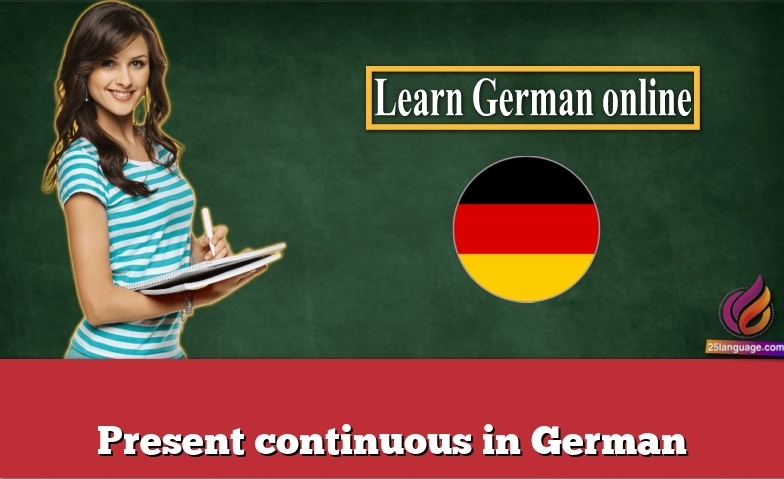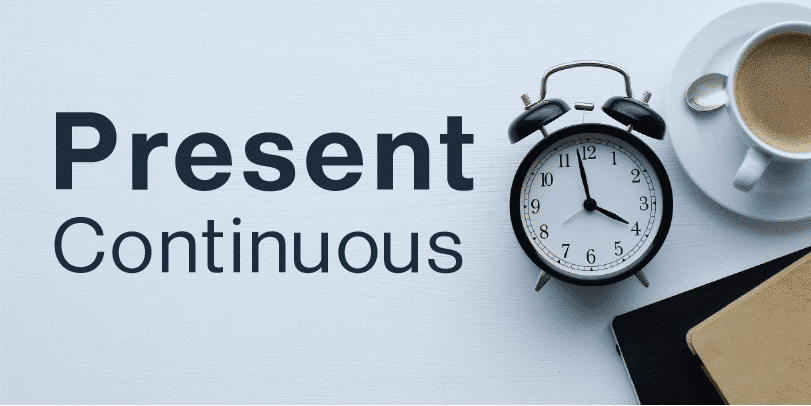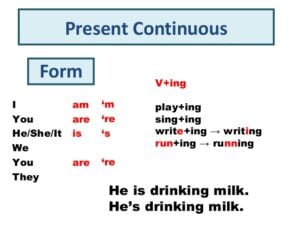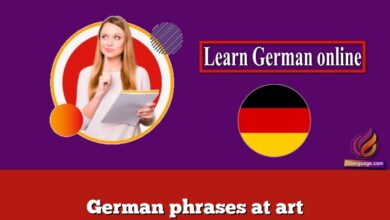Present continuous in German

Present continuous in German.The present continuous tense holds a special place in languages like English and is actively utilized in various other languages as well. It describes events happening now or ongoing situations in a specific time frame. Despite its seemingly straightforward definition, the present continuous can carry multiple meanings and is used in diverse contexts, making its understanding a nuanced affair.

Explanation about present continuous in German
The German language doesn’t have a direct equivalent to the English present continuous tense (“I am doing”). Instead, the German present tense can be used to describe both simple present (“I do”) and present continuous actions (“I am doing”). Context, adverbs, or additional phrases often clarify the meaning.
For example, “Ich lese ein Buch” could mean either “I read a book” or “I am reading a book,” depending on the context. To make it clear that an action is ongoing, Germans often add additional time indicators or qualifiers, such as “gerade” (right now) or “im Moment” (at the moment).
- Ich lese gerade ein Buch. (I am reading a book right now.)
- Ich esse im Moment. (I am eating at the moment.)
Though it may initially seem like a limitation, the German present tense is versatile and widely understood to convey both ongoing and habitual actions, thanks to context clues and additional phrases.
Examples for using present continuous in German
| English Sentence | German Equivalent with Adverb or Phrase | Literal Translation |
|---|---|---|
| I am eating. | Ich esse gerade. | I am eating right now. |
| You are working. | Du arbeitest im Moment. | You are working at the moment. |
| She is reading. | Sie liest gerade. | She is reading right now. |
| He is watching TV. | Er schaut gerade fern. | He is watching TV right now. |
| We are studying. | Wir lernen gerade. | We are studying right now. |
| They are playing soccer. | Sie spielen gerade Fußball. | They are playing soccer right now. |
Conversation about present continuous in German
| English Conversation | German Conversation | Contextual Clue | English Translation |
|---|---|---|---|
| Are you eating? | Isst du gerade? | gerade | Are you eating right now? |
| Yes, I am eating. | Ja, ich esse gerade. | gerade | Yes, I am eating right now. |
| What are you doing? | Was machst du gerade? | gerade | What are you doing right now? |
| I am working at the moment. | Ich arbeite im Moment. | im Moment | I am working at the moment. |
| Is she reading? | Liest sie gerade? | gerade | Is she reading right now? |
| No, she is not reading. | Nein, sie liest gerade nicht. | gerade nicht | No, she is not reading right now. |
| Are we studying this evening? | Lernen wir heute Abend? | heute Abend | Are we studying this evening? |
| Yes, we are studying now. | Ja, wir lernen jetzt. | jetzt | Yes, we are studying now. |
| Are they playing soccer? | Spielen sie gerade Fußball? | gerade | Are they playing soccer right now? |
| No, they are not playing soccer right now. | Nein, sie spielen gerade kein Fußball. | gerade kein | No, they are not playing soccer right now. |
In conclusion, the present continuous tense is a versatile and dynamic aspect of language, not only prevalent in English but also in various other languages. It serves as an essential tool for conveying ongoing actions or situations occurring at the moment of speaking.





























